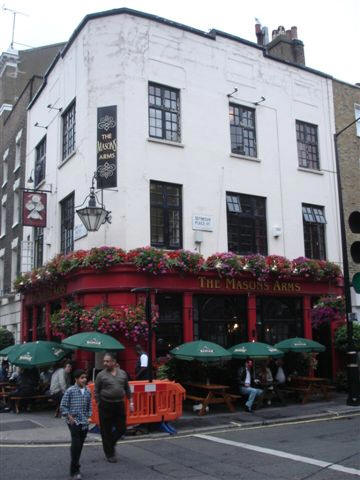
When traveling to Europe, there are a few quintessential cities you must visit. Some say Paris and others mention Rome but London, England is definitely at the top of the list. Of course it is a plus that the United Kingdom speaks English but as our closest ally, they are also very friendly. There is also a great wealth of history in this city as well as the epicenter of Western Europe. Arriving in London, you have the feeling of being in an American city with all the cultural feelings of being in Europe.
Traveling to and from London, England can be one of the most difficult aspects of traveling to this area. Most student travelers studying in Luxembourg will be equipped with a Eurail pass. This pass allows travelers to take multiple train trips to a certain number of destinations anywhere on the European continent. Unfortunately for those with Eurail passes, it is not possible to use the Eurail to travel to London or anywhere in the United Kingdom for that matter. This is because the entire United Kingdom is not on the European continent; it is on an island directly north of France in the Atlantic Ocean.
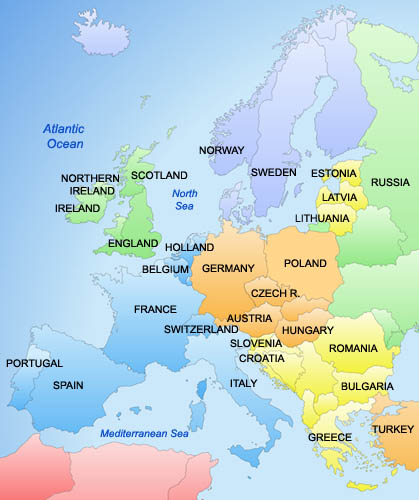
It is a possible option for students to take the Chunnel, a subway route that goes through English Channel to reach London. A ticket for the Chunnel must be purchased from a company called EuroStar (eurostar.com). Again, a Eurrail pass may not be used for this purchase because the companies are separate. Although this may seem like a viable option, many students in the past have expressed that the Chunnel is too expensive, and too time consuming. A cheap airline is a better alternative to taking the Chunnel. Some of the best low-fare airlines available are Easy Jet and Ryan Air (ryanair.com and easyjet.com). The key to booking low-fare airlines is to book early. The earlier you book a flight, the cheaper it will be. If you are planning on spending a weekend in London or anywhere in the United Kingdom, book a flight as early as possible! I waited two weeks before traveling to book my flight and ended up paying around 45 Euros for a flight. Another person I traveled with booked her flight 5 weeks in advance and paid around 10 Euros. The only downside to taking a low-fare airline to London is the unreliability of the airlines. These airlines are more subject to delays, cancellations, and waiting in multiple hour-long lines to check in. If you plan on taking a low-fare airline to London, make sure to be at the airport at least three hours in advance!
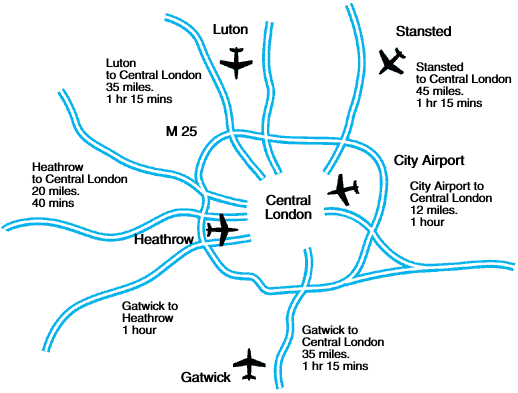
Choosing a hotel is not a difficult aspect of traveling to London. There are many cheap hostels in London, as well as lower class hotels which are still cheap enough for college students. The best locations to stay in London are in the west side of the city around Hyde Park, the Westminster area near Buckingham Palace and Big Ben, or the Southeast side around the London Eye and the Thames River. These are the best places to stay in London because they are all around the main tourist attractions. With that being said, you really can’t go wrong staying anywhere in London because of the great tube stations. About the longest time it would take to get from the furthest hotel on the outskirts of town to anywhere in the city would be about 45 minutes. Here is a website with many hotel listings as well as the sections of town the best hotels are located in London: http://www.hotels-london.co.uk/london-guide/
Traveling around on foot through the city can be long and painful because London is one of the biggest cities in the world. Taxis are a viable option, but are typically not the best route to take. Taxis can be very expensive, especially because London is a very expensive town. What may appear to be a cheap taxi ride can actually drain your pocket faster than you can blink. The best option for traveling around London is to take the subway, also known as the “Tube”. Although the map may appear confusing at first, it is very simple and convenient once you get the hang of it. The most confusing part of the tube is the different zones. The London tube is split into multiple “zones” which will all take you to a specific part of the city. Once you find out which zones you need to go to, you can buy a tube ticket to any of the zones, or all of the zones, which will last you the whole day. A tube map, as well as bus and city maps can be found on this page: http://www.tfl.gov.uk/ The tube stop to access Parliament and Big Ben as well as Westminster Abbey is at Westminster stop on the yellow line in zone 1. Tower hill is the stop to see the Tower of London and the famous Tower Bridge, also in zone 1. If you go to Victoria stop you’ll find an express to Gatwick Airport; the airport you fly in and out of with EasyJet as well as Ryan Air. This Gatwick Express leaves every 15 minutes and takes 30 minutes to get to Gatwick. A one way ticket will set you back 8 pounds. Booking travel and hotels are necessary parts of traveling to London but after those are taken care of, the fun can begin!
While staying in London, you must remember one very important factor. The Great Britain Pound has a very different exchange rate to the Euro. Because this rate fluctuates, it is always smart to know what the exchange rate is relative to the dollar or Euro. Currently, the pound, also called quid, is 1.5 dollars to 1 pound. As far the Euro, it is currently 1.23 Euros to 1 pound. These rates are important to know as to prevent withdrawing too much money from your account or perhaps charging too much on your card. These actions can lead to some severe penalties from your bank.

Sightseeing in London
Hop on Hop off Bus Tour
There are a million and one things to see and do in the beautiful city of London so you must choose what sights that you want to see depending on how much time you have. If you don’t have lots of time to spend in the city, you can take a hop on hop off bus tour around the city in order to see many of the most popular tourist destinations. The Original London Sightseeing Tour is a great tour to go on in order to leisurely travel around the city in an efficient way while allowing you to easily get on and off at every major tourist destination. The cost of a 24-hour ticket is £25 for an adult unless you are able to snag a summer special price ticket for £22.50. There are three different routes by which you can travel around the city, but the yellow and the blue are the two routes that most college students would prefer. The Yellow route (Original Tour) takes off at four different starting points scattered throughout the city every 10 minutes from 8:30 AM – 8:00 PM and will take you to all of the most famous landmarks including Buckingham Palace, Big Ben, Downing Street, the London Dungeon, Tower Bridge, and the Tower of London. The Blue route (Museum Tour) has two starting locations every 20 minutes from 8:30 AM – 5:15 PM and will take you to many of the most popular attractions, shops, and museums including Kensington Palace, Harrods, the V&A, and the Natural History and Science Museums.
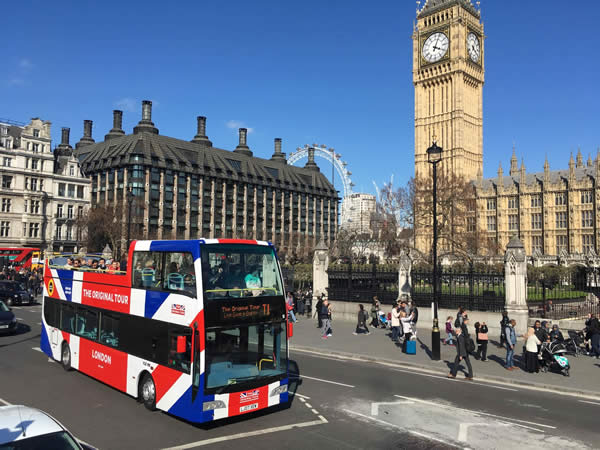
Buckingham Palace
One of the most important must-see destinations in London is the Buckingham Palace. It dates back to 1703 when the Duke of Buckingham built the Buckingham House. It was then bought by George III in 1761 and reconstructed under George IV in 1825. Finally during the time of Queen Victoria, it became known as the Buckingham Palace and has served as the London Royal Residence since 1837 and the administrative headquarters of the British monarchy. The Buckingham Palace consists of 775 total rooms, 19 State rooms, 92 offices, 188 staff rooms, and 78 bathrooms.

There are four main things to see at the Buckingham Palace: The State Rooms, Changing the Guard, The Royal Mews, and the Queen’s Gallery. However, the State Rooms are only open to visitors during August and September for £17. The Queen’s Gallery, which houses a collection of treasures and art, costs £8.75 to visit while The Royal Mews, which houses the State vehicles used by the Royal Family, costs £7.75. The Changing of the Guard is a very popular tourist attraction and is free to watch. It happens every day in the summer, and every other day in the winter at 11:30 AM.
Big Ben and the Houses of Parliament

Big Ben, possibly the most popular tourist attraction in London, was built in 1859 and is the third largest free-standing clock tower in the world at 316 feet. It is located at the north end of the Palace of Westminster (aka Houses of Parliament) and is a four-faced chiming clock that offers a spectacular view at night when the 23 square feet clocks are illuminated. Don’t get confused when you think that the name Big Ben refers to the tower itself when it actually refers to the thirteen ton bell hung within the tower.
The Houses of Parliament is located on the north bank of the river Thames in the heart of the London Borough in the city of Westminster. It consists of the House of Lords and the House of Commons where the government meets to discuss laws and government policy. Take advantage of the free admission, but if you are looking for a guided tour, you must arrange that in advance.
Another thing to note: Although Big Ben is such a popular tourist attraction, overseas visitors are not able to see the interior of the tower. Only those that belong to the UK are able to arrange a special visit to the top of the tower. However, this amazing structure is still a must-see in London. A current MUDEC student, Brad Botti, describes the amazing view of Big Ben and the Parliament: “These magnificent sculptures were everything I thought they would be and more. Overlooking the Thames River, the giant building of Parliament seemingly had never ending spires on its top.”
The London Eye
The London Eye was constructed in March of 2000 to symbolize the turn of the century and has quickly become an iconic structure of London. It is a 443 feet high Ferris wheel and is actually the most popular paid for tourist attractions in London bringing in 3.5 million visitors a year. Riding the London Eye is an excellent way to spend a half hour of your time and to soak in the beautiful views of London. Ticket prices are currently at £18.90.
The Tower Bridge

The Tower Bridge was completed in 1894 by nearly 450 workers in a Victorian Gothic style. This bridge, which can be raised to let large boats through, has become one of the most recognizable structures in London. Pictures of the bridge from afar are breathtaking, but actually going up into the bridge and strolling along the walkway between the two towers is even more incredible. It is considered by many to be the most magnificent view of the city. You can also check out the tower bridge Exhibition which is located inside the bridge where you can learn about it’s history and contruction. The cost to visit the tour is £6 for adults but only £4.50 for students with an ID… so don’t forget your ID if you want to save money.
Other Places to See
There are many other places to see in London that are well worth the visit including the London Zoo, Shakespeare’s Globe Theater, the HMS Belfast (only vessel left from WWII), St. Paul’s Cathedral, Royal Albert Hall, the National Gallery, and the Windsor Castle. Also, be sure to stroll down the Mall, a road that leads up to Buckingham Palace and if you have the time, take a river cruise on the Thames River. After seeing all of these touristy things, it is time to experience the everyday life of the city!
London is among many things, is a great place to find a meal. There are several different places to eat in London that allow you taste foods from all over the world. Indian restaurants as well as other Asian themed restaurants are very prevalent throughout the city. Being that England is a very westernized country, you can also find almost all of the fast food restaurants we have in America. This includes McDonalds, Burger King, KFC and Europe’s only Chipotle which is found on Charing Cross Rd (Only 2 blocks from the Tottenham Court Road stop in the Tube). If you are looking for a little more English culture in your food, there are several options. In most pubs, you can buy English favorites such as fish and chips, steak and kidney pie, black pudding and the Scottish dish haggis. Those with a strong stomach and really want to experience the culture of the UK should try black pudding. It is made by drying pork blood mixed with oatmeal until it is solid enough to be molded to sausage form. London also has a great selection of beer. Most are beers that you can find in America such as Heineken, Red Stripe and Amstel but there are also beers such as Spitfire or Abbot Ale that would be tough to find in the States. The large misconception is that beer is served warm in London. In reality, most beers are served cold and only certain ales are served at cellar temperature which is around 50 degrees Fahrenheit.
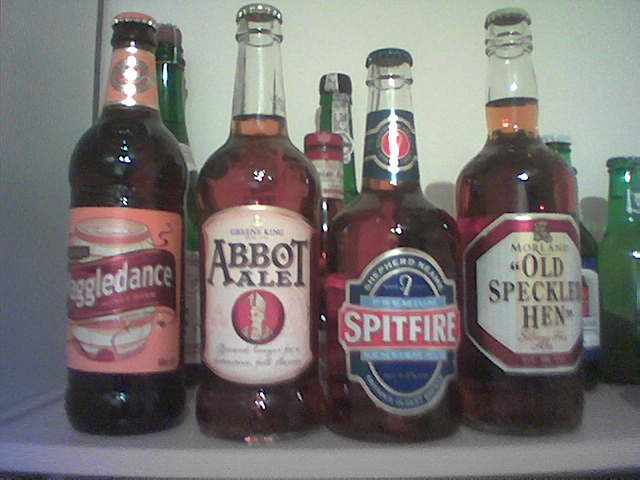
As far as the cost of things in London, the pound amount for products are around the same as dollar amounts in America. For example, you can get a Big Mac meal at a London McDonalds for about 6 pounds which is about how many dollars it costs to get that meal in the States, except the exchange rate causes that to be around $10. In most pubs, you can get a pint of beer for around 3.50 Pounds which equates to about $5.25. Deals can be found though; I managed to find a grocery store that sold 3 liters of Strongbow for 3.65 Pounds or around $5.50. Also, fish and chips next to the tower of London are only 4 Pounds or $6 which was the best deal I found in London. If you are looking for a lighter meal, Pret a Manger’s are pre-made sandwich shops were you can get a nice sandwich, some crisps (potato chips) and a drink for around 5 pounds. As a very quick and easy meal, Pret a Manger was one of my favorite places in London.

When it comes to the daily lives of the citizens of London, you may sometimes doubt they have jobs. When walking down big shopping streets such as Oxford Street, you will constantly have to avoid being knocked over by passersby at any times of the day. Another thing I noticed while walking through the streets of London is that no one really walks that fast. It seems that people more move with a relaxed stroll here more than they quickly walk. This can be annoying at times if you are in a hurry but again, it is part of their culture.
Another large aspect of London life that may seem odd to an American is the pub scene. Pubs are on almost every corner and you will always find a small crowd in them. People will go to a certain pub for several years and even develop close relationships with the owners and employees. I frequented the Mason’s Arms which is off of Great Portland street and is my favorite pub that I visited in London. The people were very nice and the regulars all were impressed to see an American happen upon their hole in the wall pub. Parks are another big leisure time activity for citizens of London. Hyde Park is one of the biggest parks in London and is located very near Buckingham Palace. This park was not my favorite one though. Regents Park which has its’ own Tube stop is one of the most beautiful parks in London. Not only do they have a brilliant and colorful rose garden but they have Primrose Hill which gives you beautiful views of the skyline of London.

The night life in London is almost the opposite of Barcelona or Prague. Rather, it is similar to Paris or Munich in that it has more pubs than clubs. Places where you can have several drinks without the thumping sound of techno makes up the majority of night hot spots. One place called The Sports Café is located on Haymarket Road near Piccadilly Circus. For those looking for an “American College” atmosphere, this is the place in London for you. Not only do most college students go there for drinks at night but games of beer pong can be found on the second floor of the bar. Not only is there beer pong but there is a dance floor if you want to shake your groove thang. This is not a typical place in London though. The night life there is mostly spent in pubs. Good beer and good friends surround you and as long as you are not obnoxious, residents will welcome you to join them for a pint. Most pubs close relatively early by our standards. Several of them close their doors before midnight but it is possible to find some that are open later than that. For late night owls, bars such as Babalou and The White House will stay open way past 3 AM and will satisfy your hunger for late night partying. They can be found in South London near the Clapham Common stop on the Tube.
London is and will always be one of the powerhouse cities in Europe. Whether you are looking for a history or fun, London will always be able to provide what you are looking for. It also is a city that you never fully experience in a few short days. All you can do is see all you can and make the most out of it. At the end of the day, London is the complete package and is a jolly good time!






